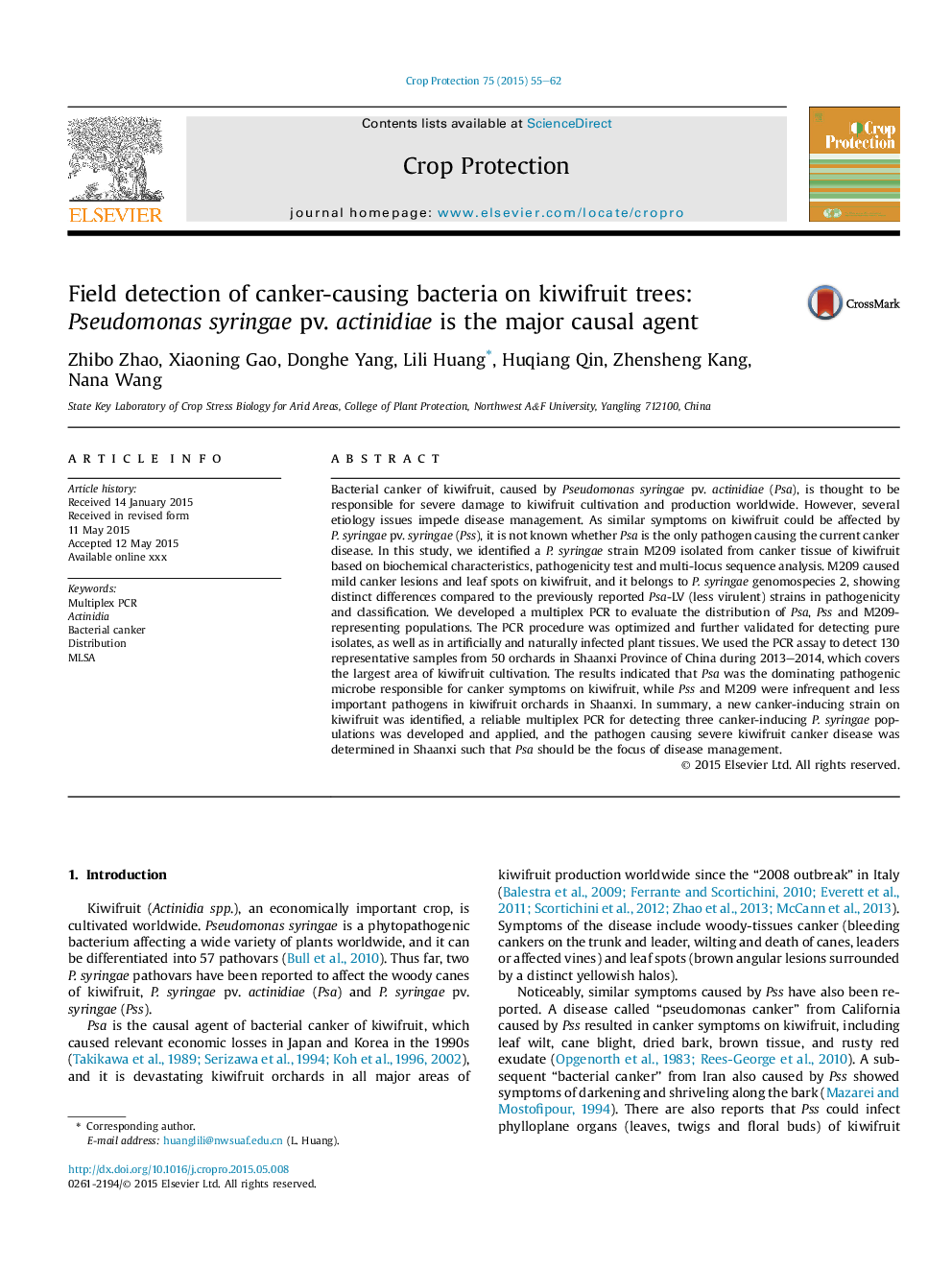| Article ID | Journal | Published Year | Pages | File Type |
|---|---|---|---|---|
| 6373485 | Crop Protection | 2015 | 8 Pages |
Abstract
Bacterial canker of kiwifruit, caused by Pseudomonas syringae pv. actinidiae (Psa), is thought to be responsible for severe damage to kiwifruit cultivation and production worldwide. However, several etiology issues impede disease management. As similar symptoms on kiwifruit could be affected by P. syringae pv. syringae (Pss), it is not known whether Psa is the only pathogen causing the current canker disease. In this study, we identified a P. syringae strain M209 isolated from canker tissue of kiwifruit based on biochemical characteristics, pathogenicity test and multi-locus sequence analysis. M209 caused mild canker lesions and leaf spots on kiwifruit, and it belongs to P. syringae genomospecies 2, showing distinct differences compared to the previously reported Psa-LV (less virulent) strains in pathogenicity and classification. We developed a multiplex PCR to evaluate the distribution of Psa, Pss and M209-representing populations. The PCR procedure was optimized and further validated for detecting pure isolates, as well as in artificially and naturally infected plant tissues. We used the PCR assay to detect 130 representative samples from 50 orchards in Shaanxi Province of China during 2013-2014, which covers the largest area of kiwifruit cultivation. The results indicated that Psa was the dominating pathogenic microbe responsible for canker symptoms on kiwifruit, while Pss and M209 were infrequent and less important pathogens in kiwifruit orchards in Shaanxi. In summary, a new canker-inducing strain on kiwifruit was identified, a reliable multiplex PCR for detecting three canker-inducing P. syringae populations was developed and applied, and the pathogen causing severe kiwifruit canker disease was determined in Shaanxi such that Psa should be the focus of disease management.
Related Topics
Life Sciences
Agricultural and Biological Sciences
Agronomy and Crop Science
Authors
Zhibo Zhao, Xiaoning Gao, Donghe Yang, Lili Huang, Huqiang Qin, Zhensheng Kang, Nana Wang,
